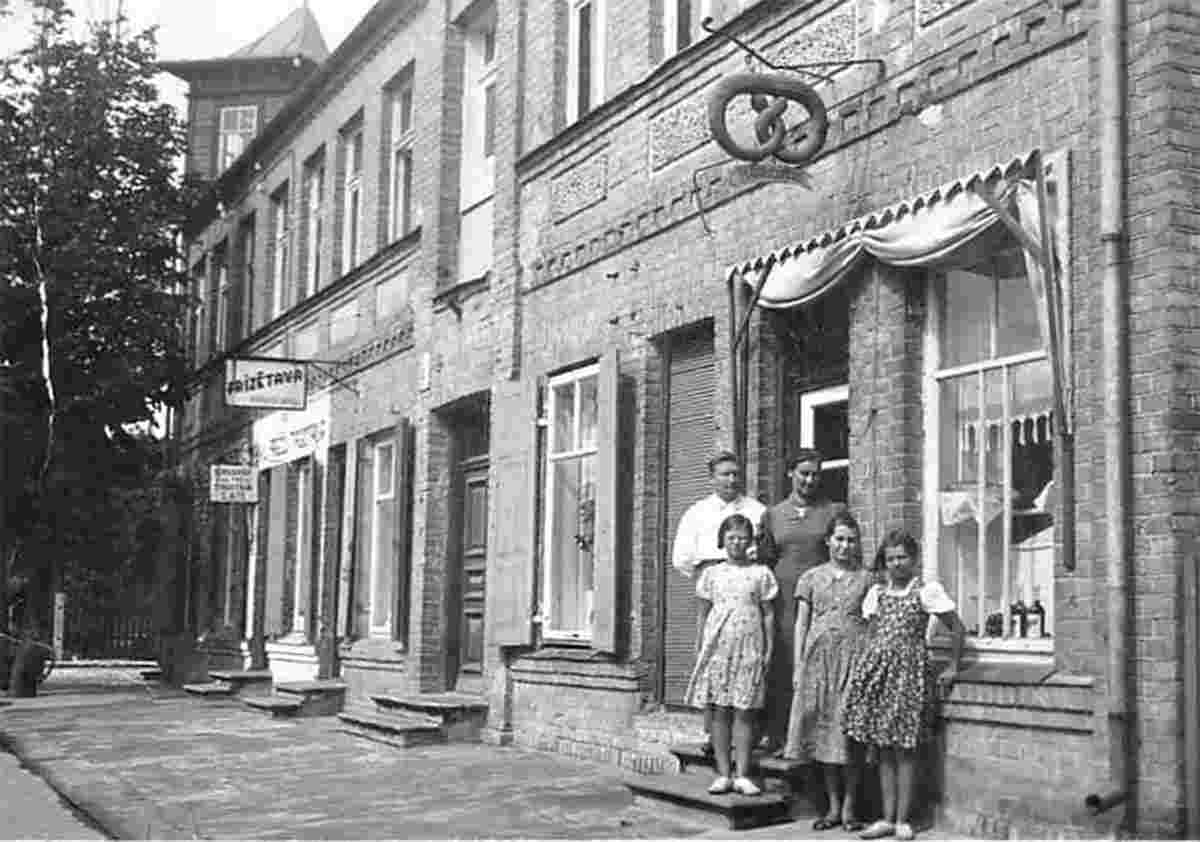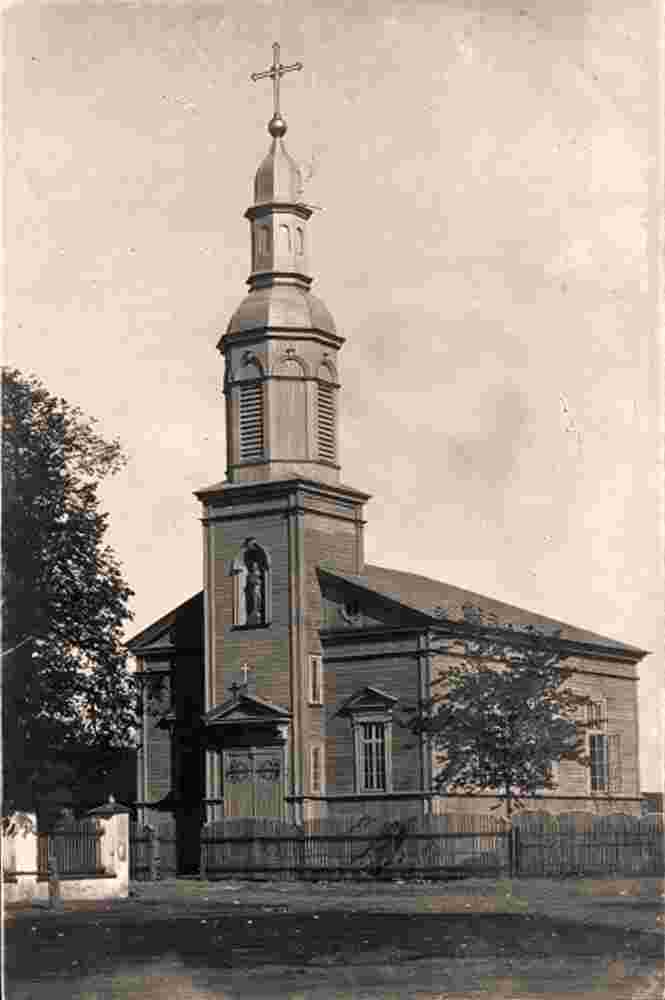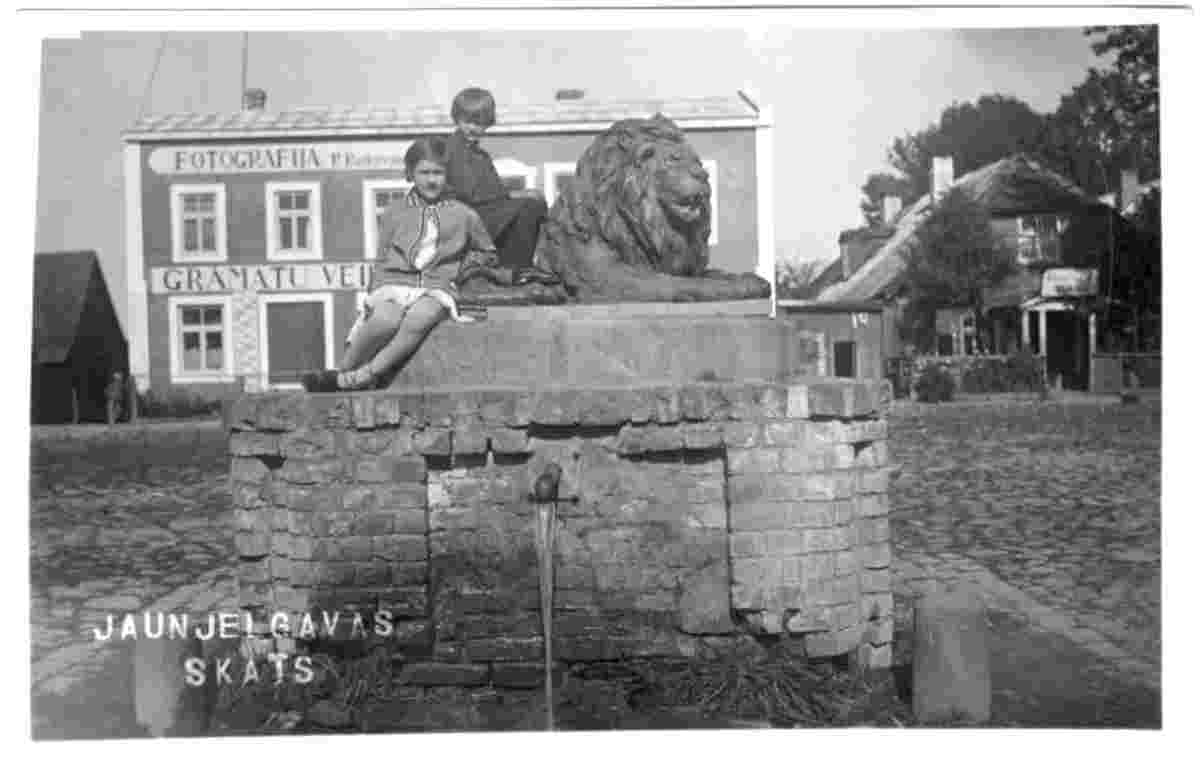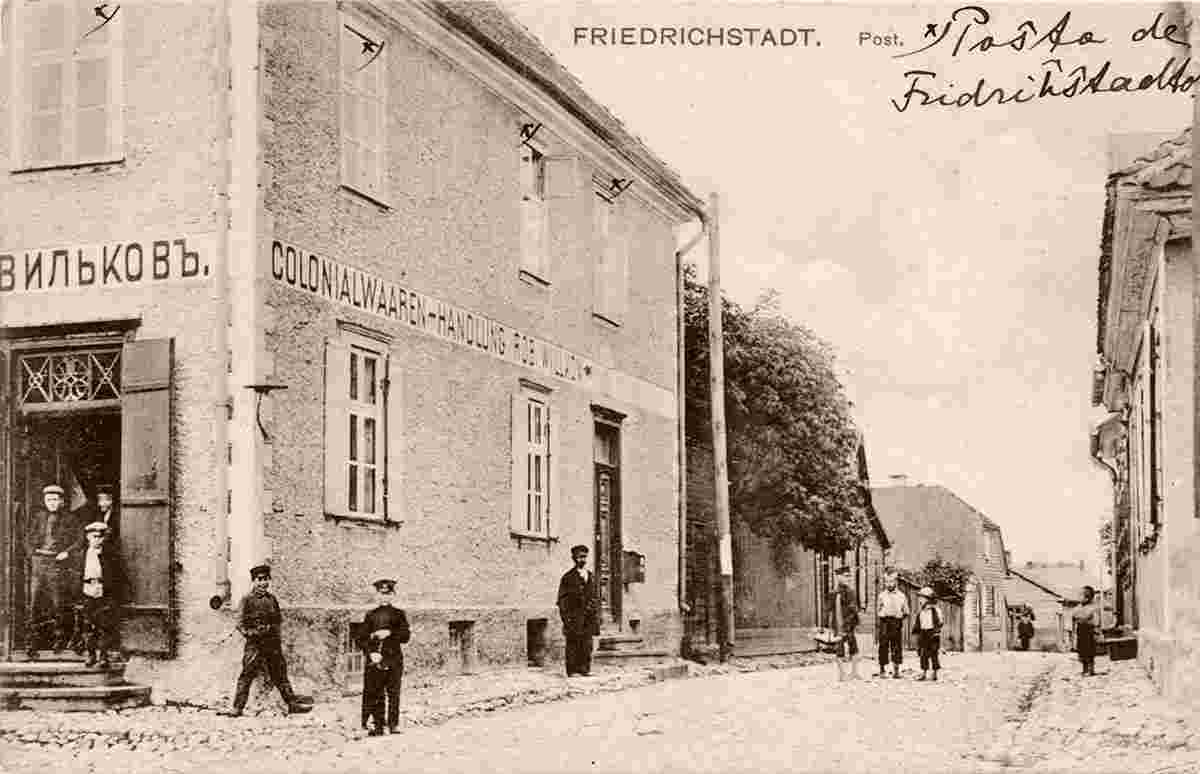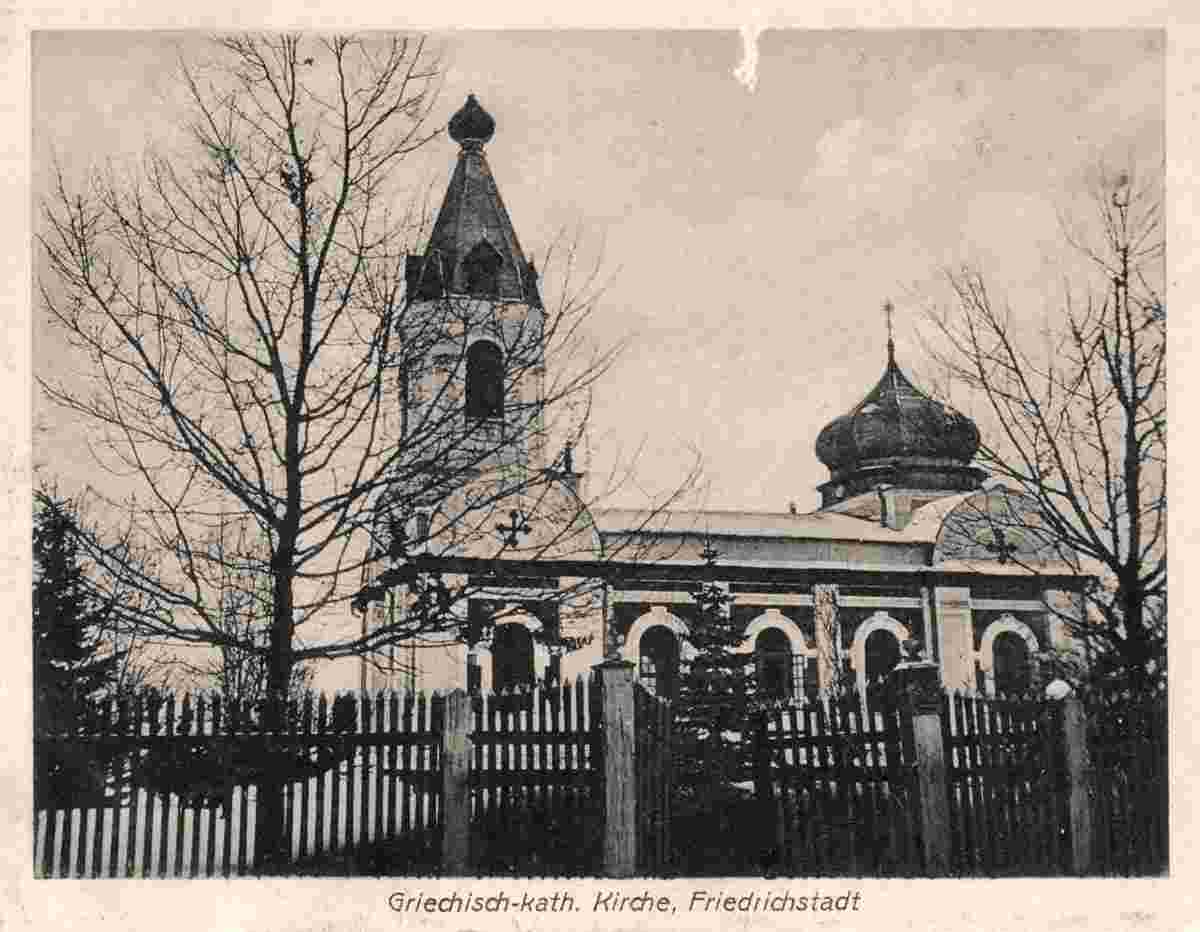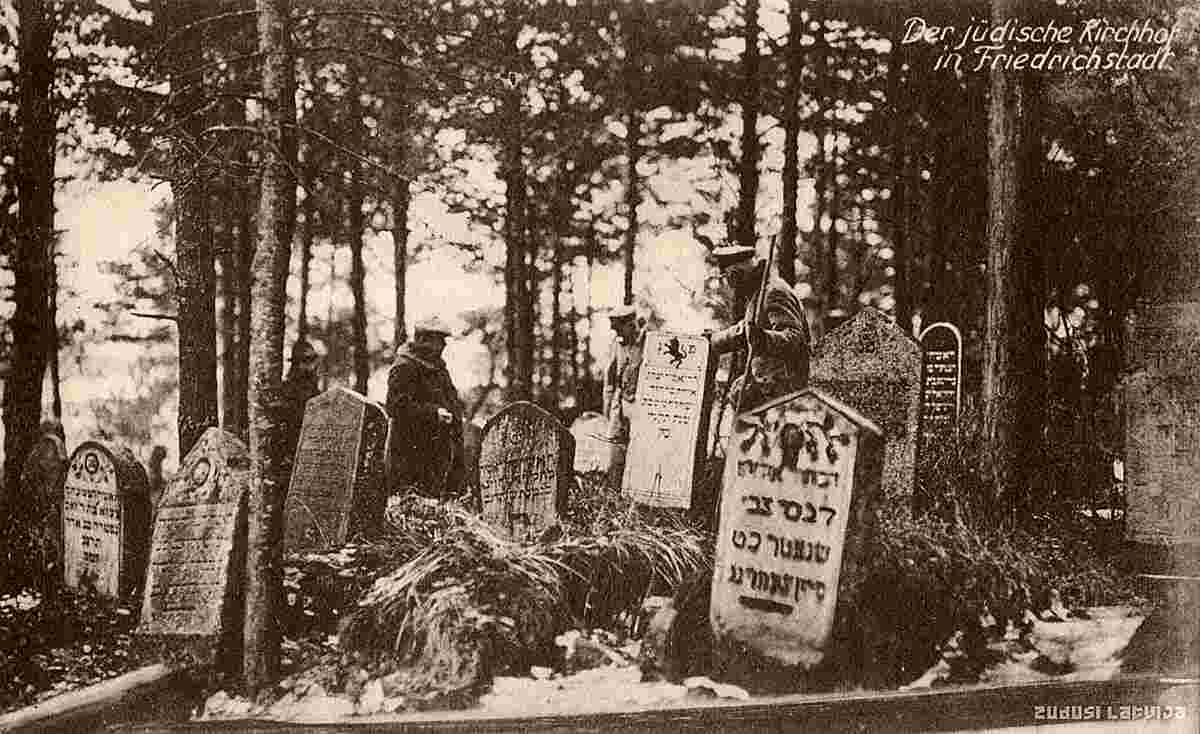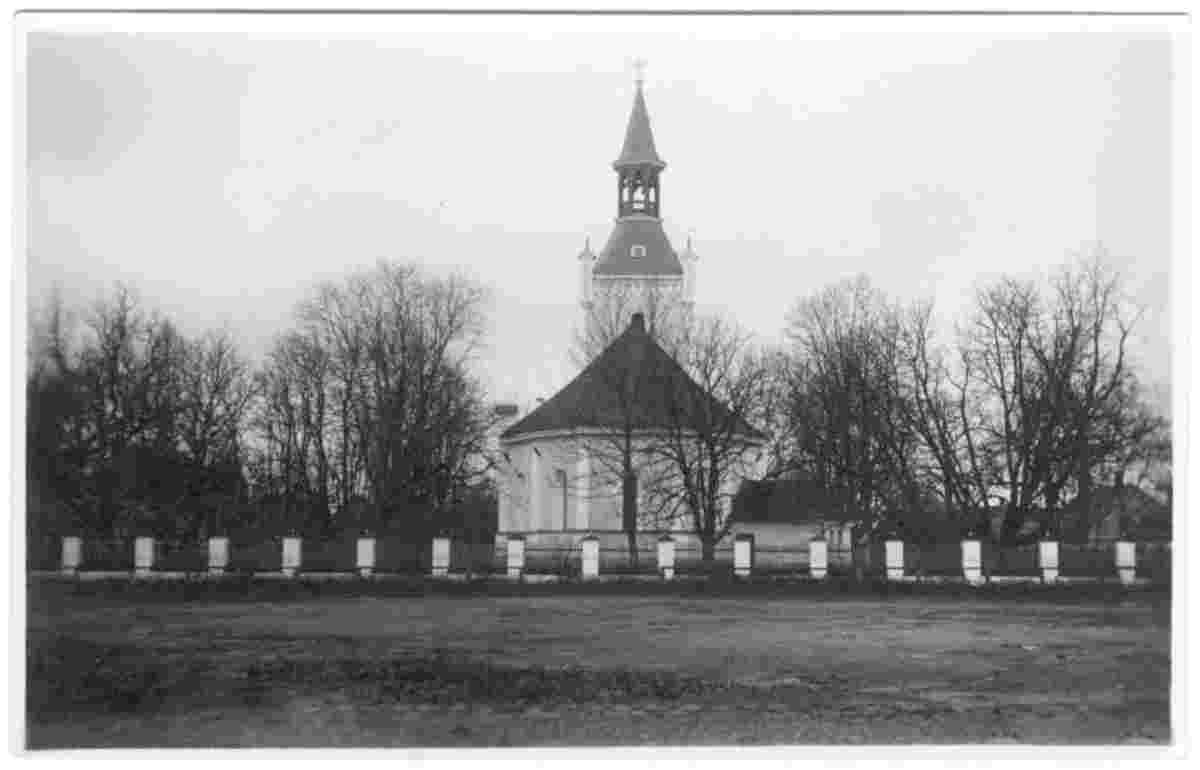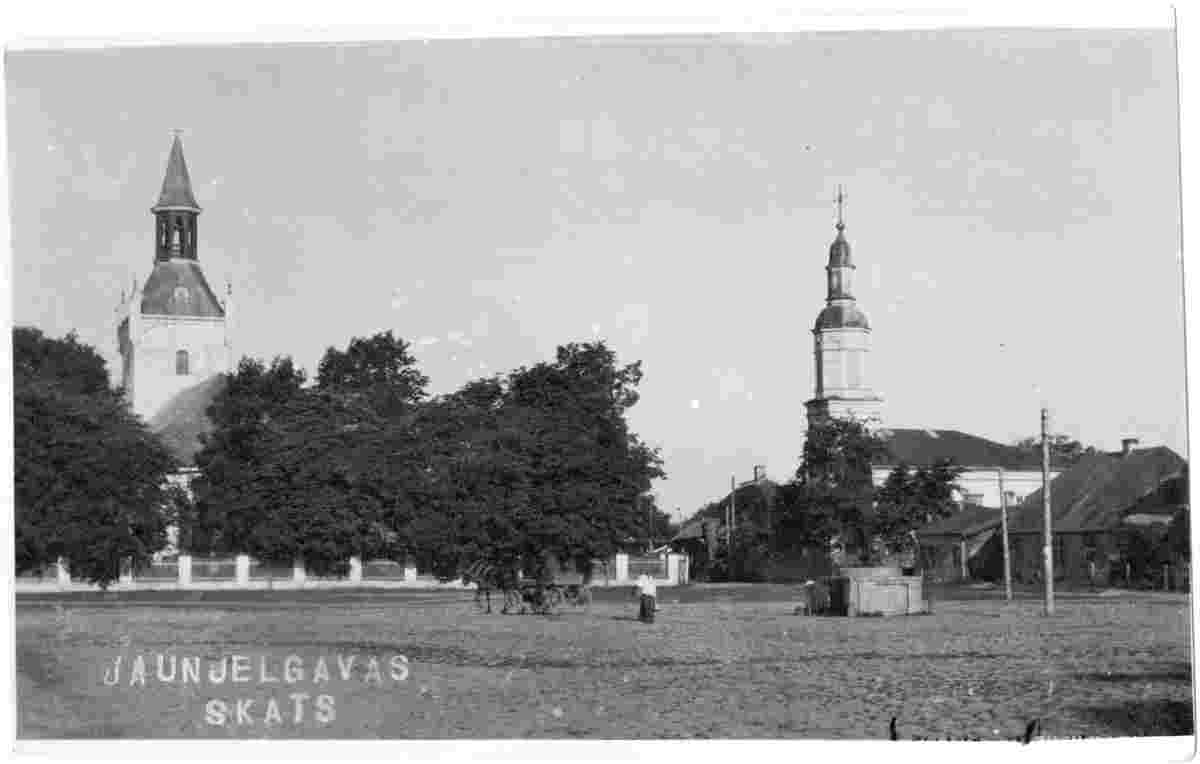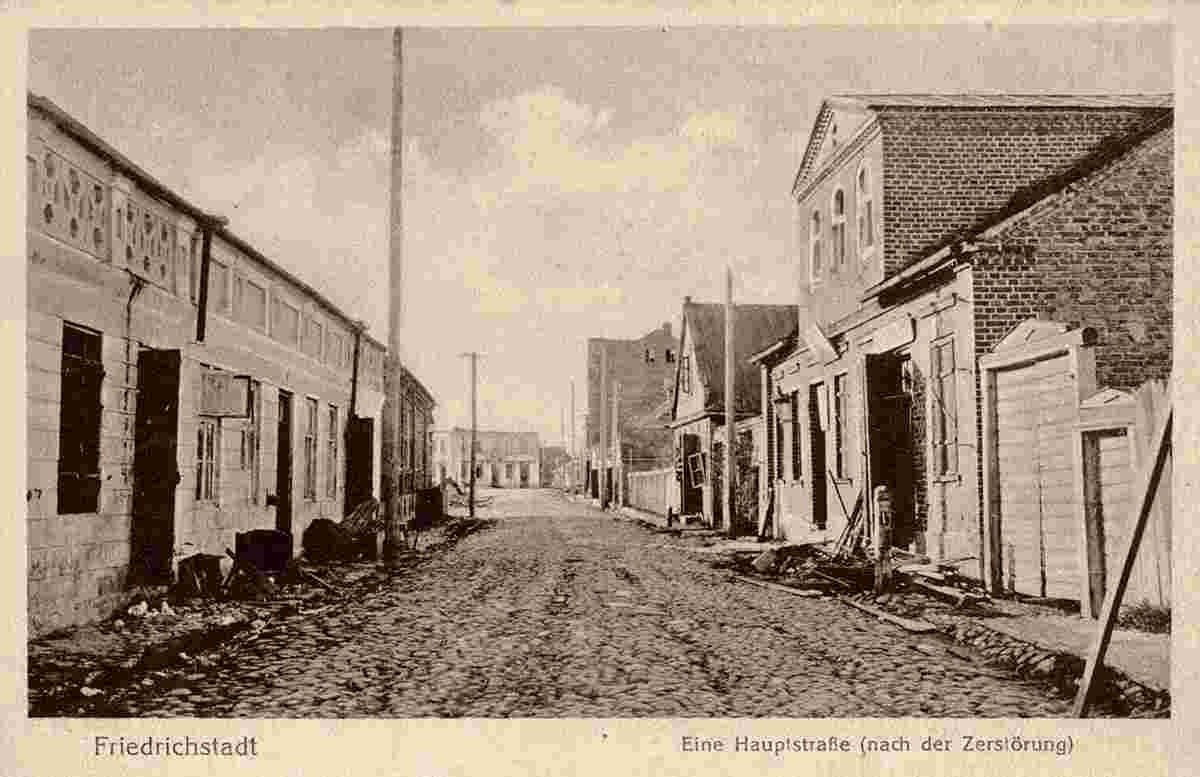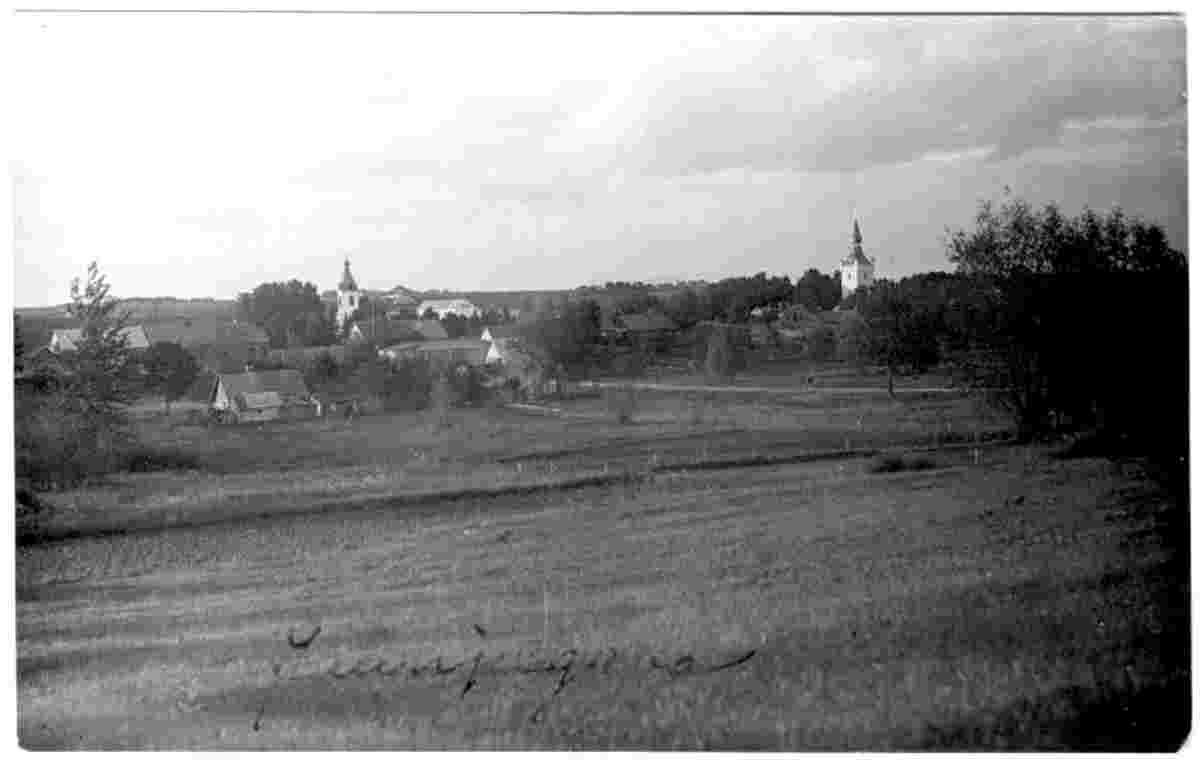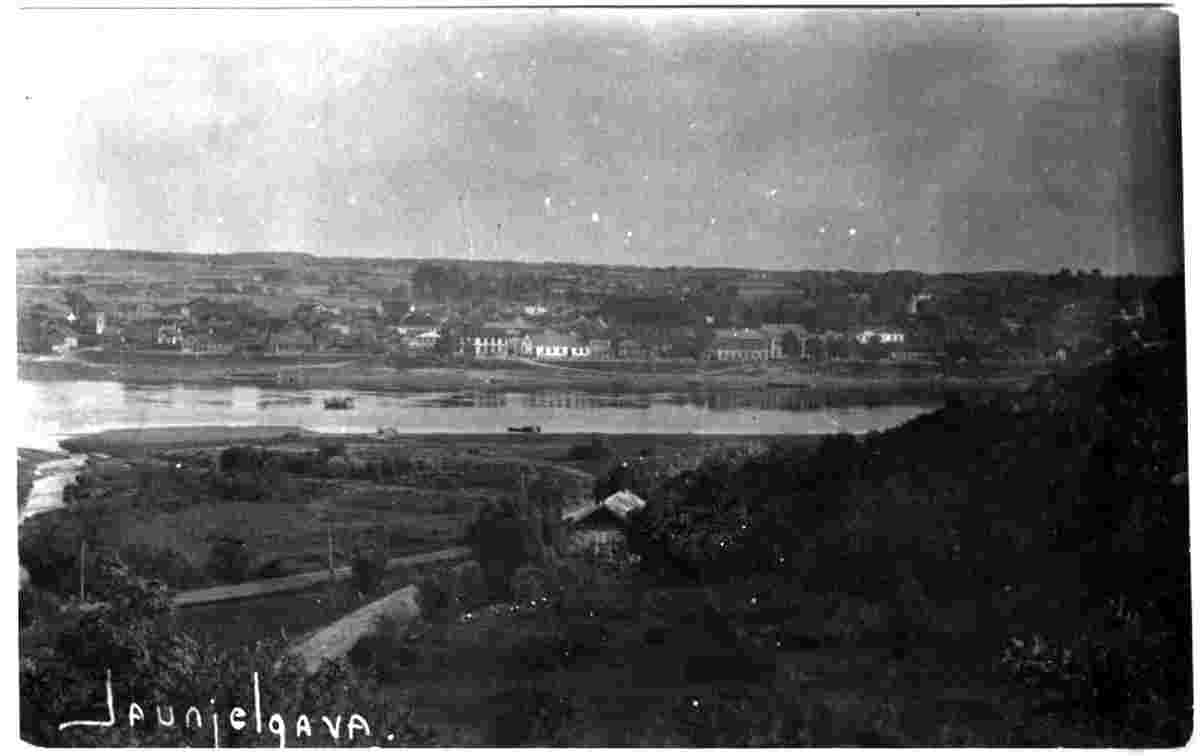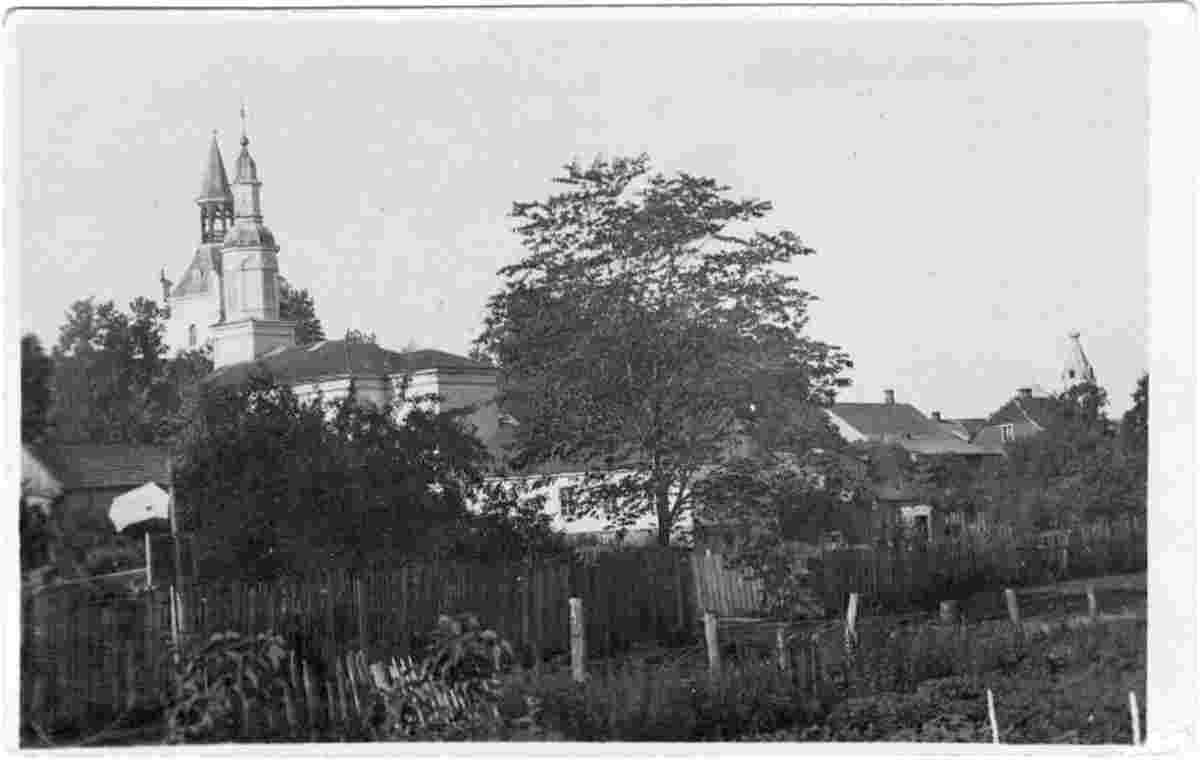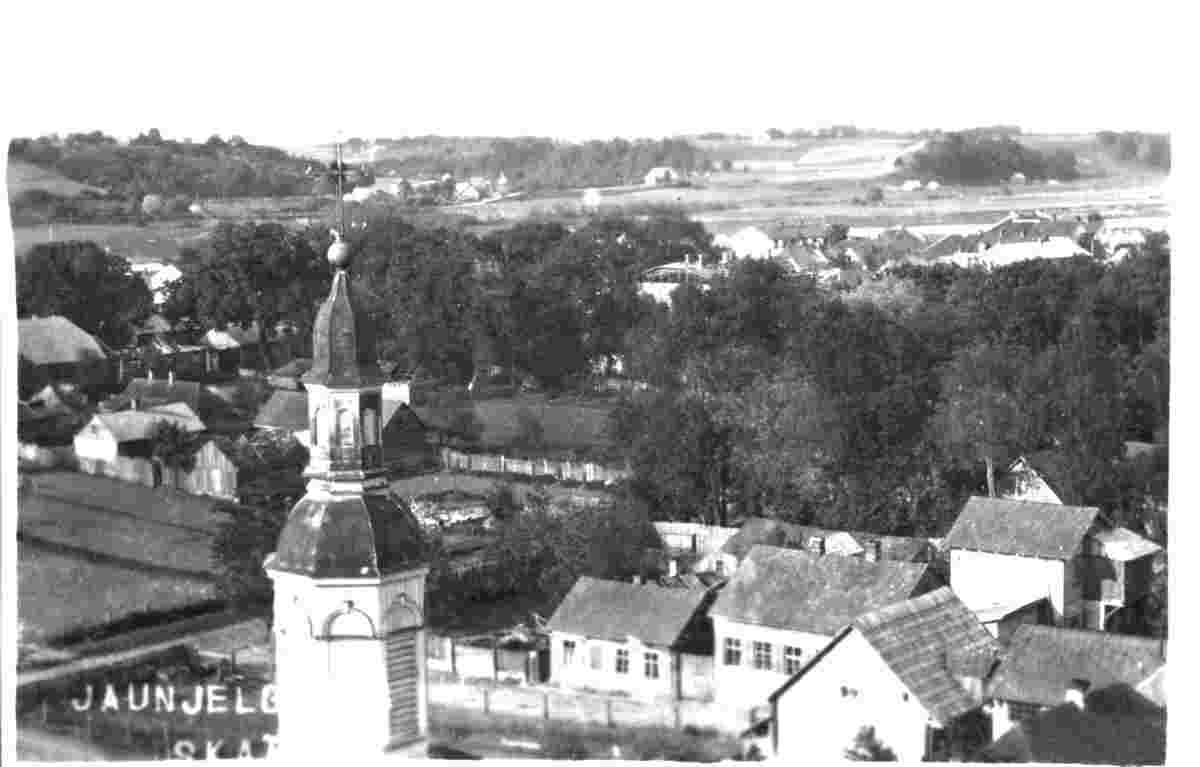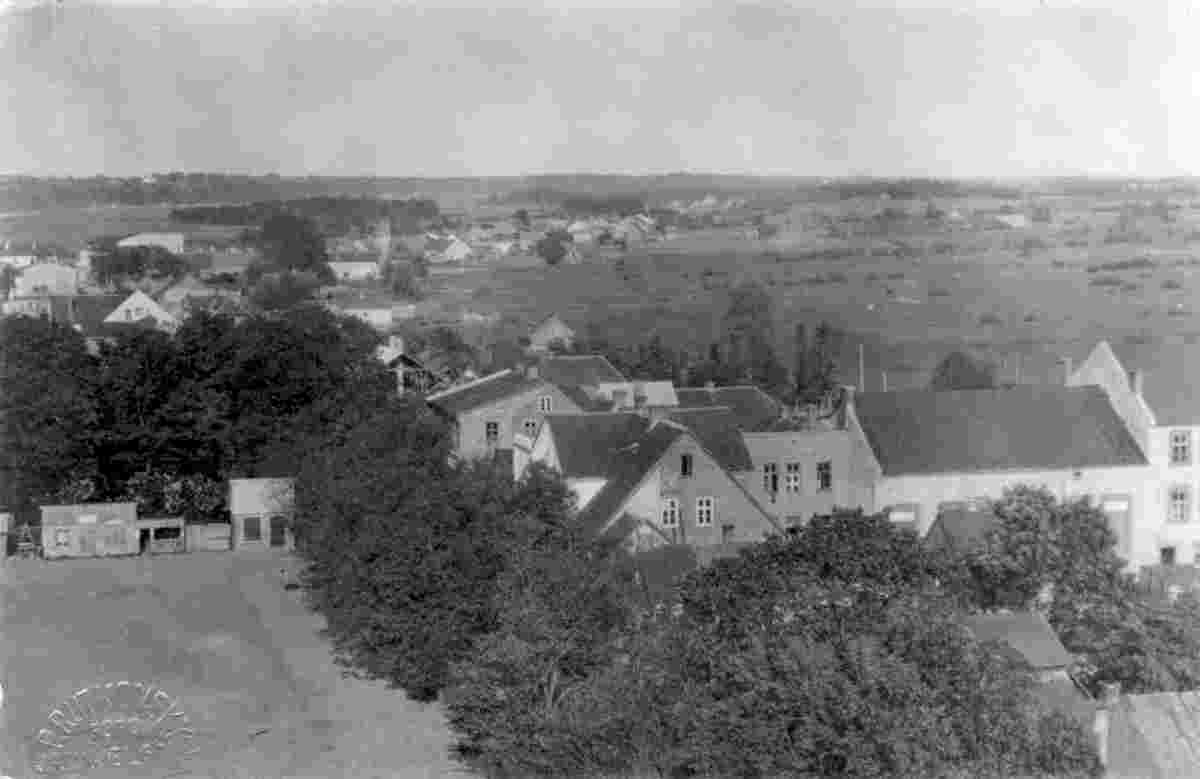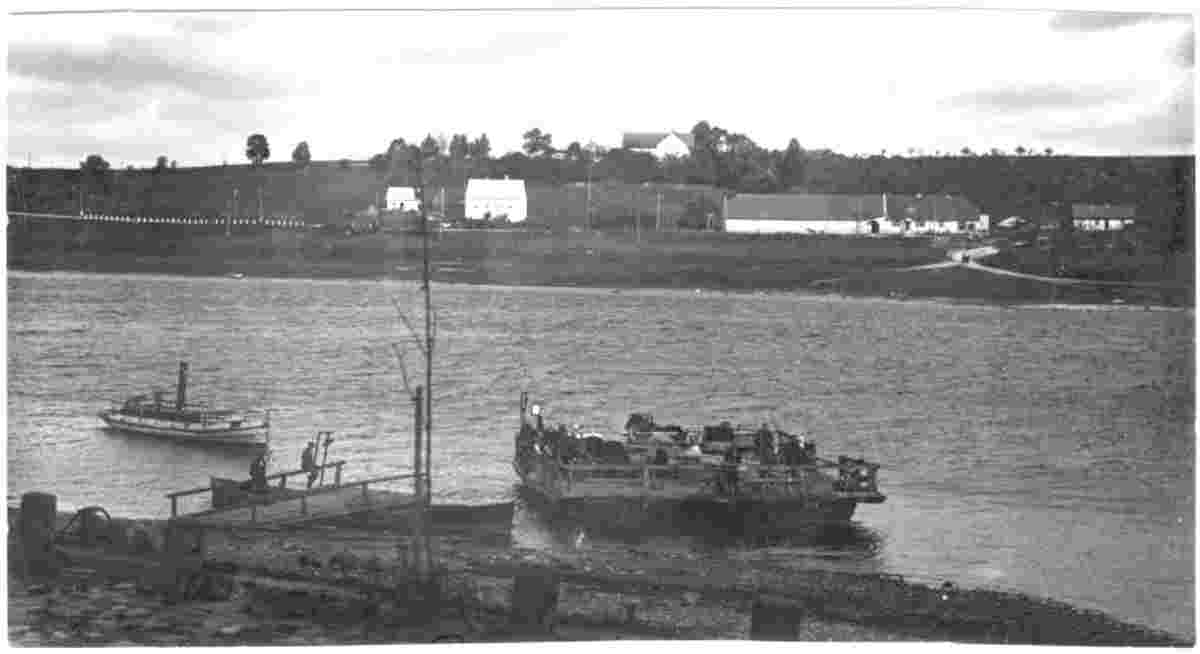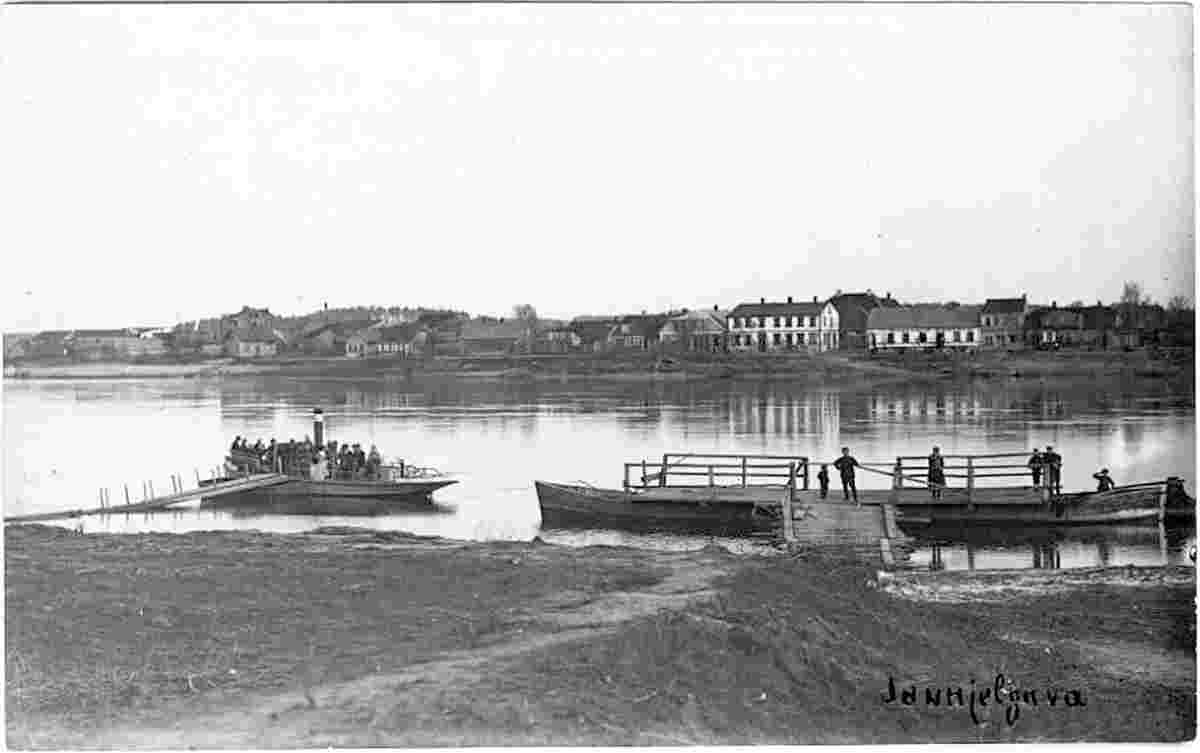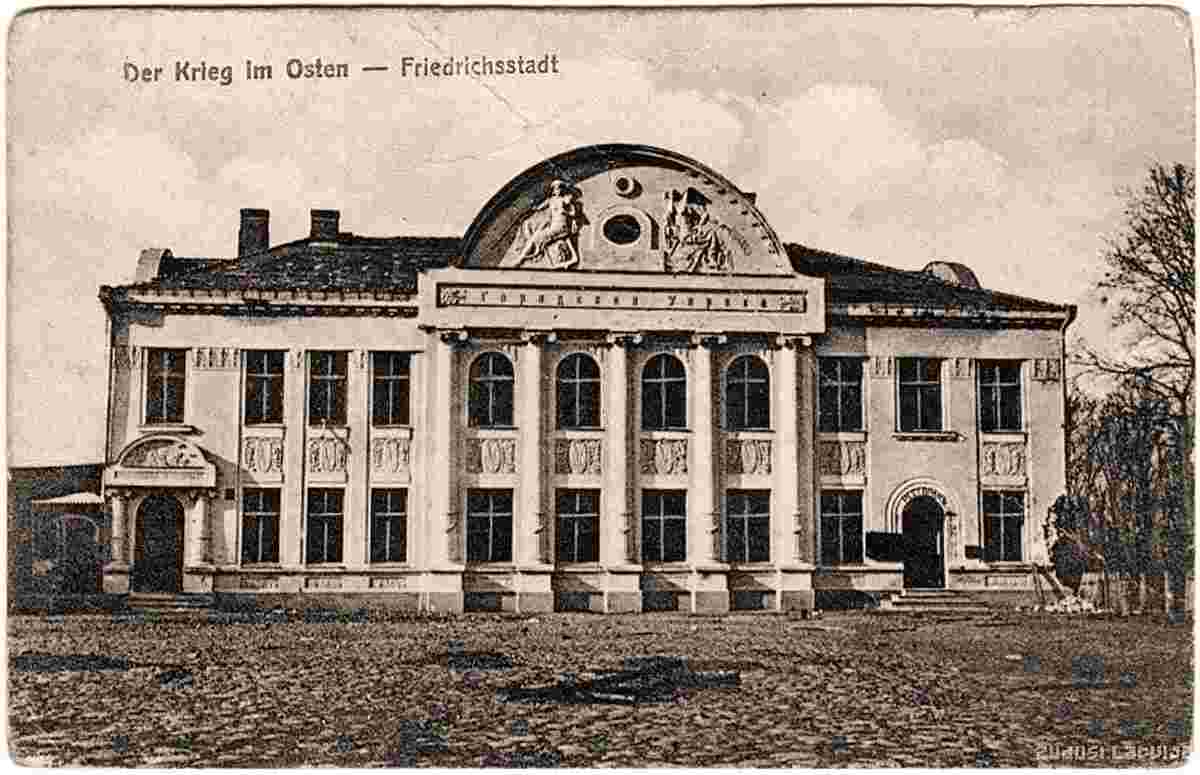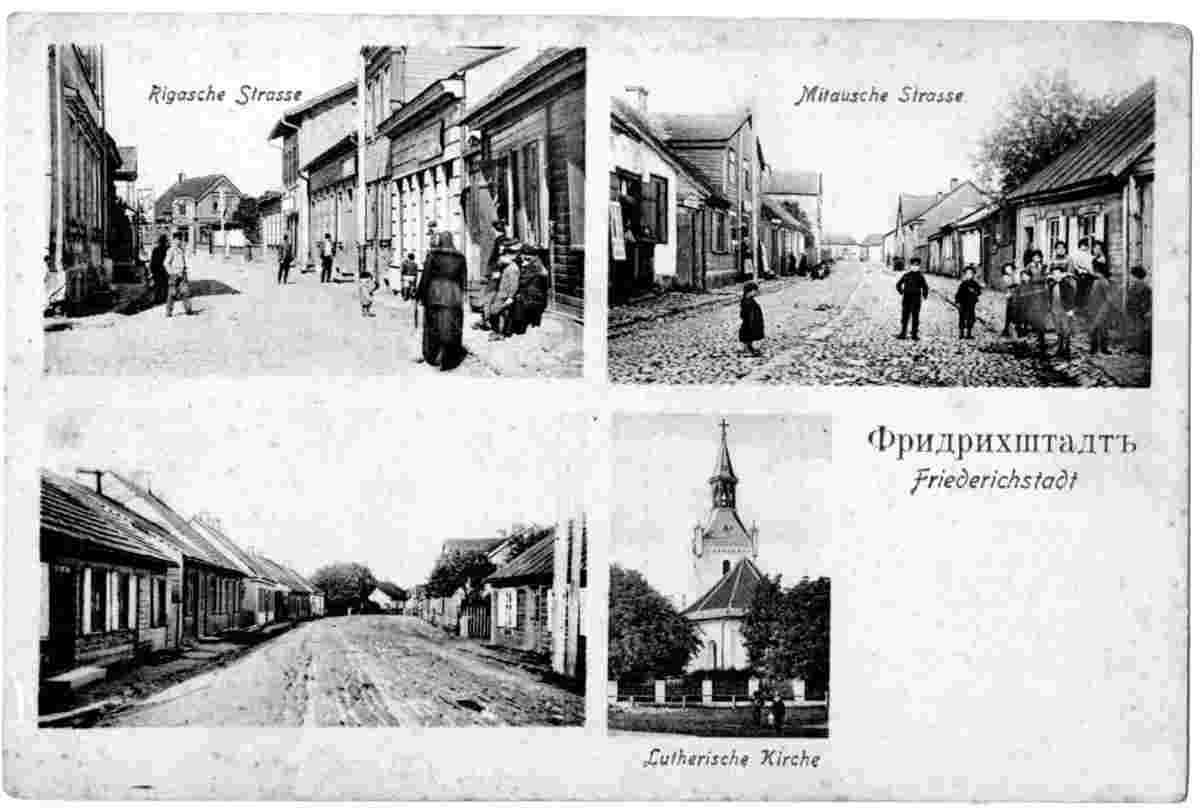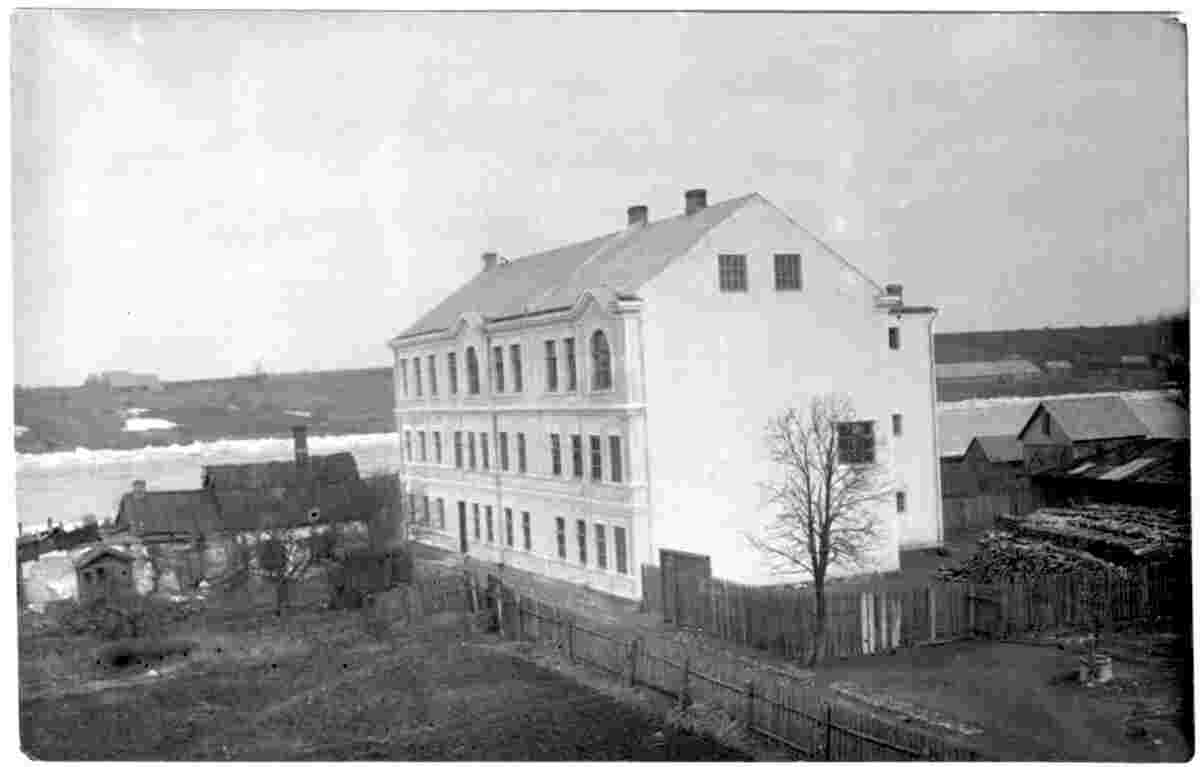Historical and old photos of Jaunjelgava (german - Friedrichstadt)
HistoryThere is no evidence that territory of a modern Jaunjelgava had been inhabited before 15th century. However a selonian Sērene hillfort existed 5 km. from the modern town. A country estate Vecsērene manor was established around 1450 not far from modern town. During the 15th century territory of the town was used as a place where merchants from Riga transported their goods from boats to carriages because, due to Daugava rapids, it was hard to navigate further downstream. As a result, a small port emerged. In 1567 Duke of Courland and Semigallia Gotthard Kettler called the small port as Neustadt. In 1590 next Duke Friedrich Kettler founded the town market and granted village rights to Neustadt. At that time about 60 families lived at the town. The village was devastated in 1621, during the Polish-Swedish war, and was re-established as a town in 1646 when widow of the Friedrich Kettler Elisabeth Magdalena of Pomerania in honour of her husband gave new name to the town - Friedrichstadt. In 1647 king of Poland Władysław IV granted town rights and approved Coat of arms of Friedrichstadt. In 1652 lutheran church was built in the town by order of duke Jacob Kettler. Town saw rapid development in the second half of the 17th century when after Second Northern War town was important transport hub. In 1710 the plague epidemic started. Also there was several large fires in the town during 18th century. Also great damage was inflicted by four big floods. Biggest of them was in 1778 when around 100 houses were destroyed. In 1795 Friedrichstadt as a part of Duchy Of Courland and Semigallia was incorporated into Russian Empire and became part of Courland Governorate. During 1812 Napaleon's invasion in Russia several small battles was fought around the town. In 1831 and 1848 cholera, raged. During first half of the 19th century town prospered thanks to merchant activities. Local inhabitants owned warehouses, taverns for rafters and was involved in transportation of goods by carriages to Jacobstadt. In 1820 there were 24 taverns in the town. After the opening of the Riga-Daugavpils railway line in 1861, the Daugava River waterway, and thus the city, lost its importance. However in the late 19th century there were still around 10 banks and various insurance offices, 60 merchant enterprises, 23 industrial enterprises and a hospital in the town. In 1909 telephone connection was established between Friedrichstadt, Riga and Jelgava. During Latvian War of Independence town was heavily damaged when after heavy fighting it was liberated by Latvian army from West Russian volunteer army. During Republic of Latvia town was renamed Jaunjelgava (literary: New Jelgava). In 1930s 3.5 km long and 3 m. high dam was constructed to protect town from floods. Origin: en.wikipedia.org | ||||||||||||||||||||
 |
Historical and old photos of Jaunjelgava (german - Friedrichstadt)
Jaunjelgavas vēsturiskās un senās fotogrāfijas (vācu - Friedrichstadt) |
| Main page • Countries of Europa • Cities of Latvia |
| Robinson Rd, CB 13862 Nassau, NP, The Bahamas |
